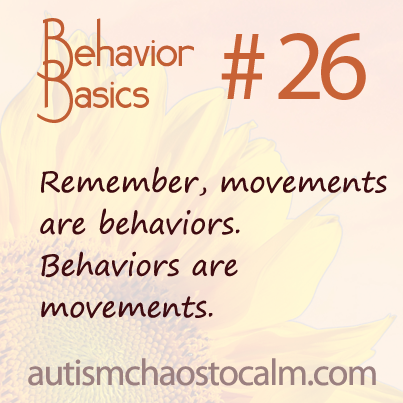 25. To build a desired behavior, reinforce it every time it occurs.
25. To build a desired behavior, reinforce it every time it occurs.
The scientific laws of behavior tell us that positive reinforcement increases a behavior. The next step to talk about is how often to reinforce a behavior. The general rule is, to build a behavior you must reinforce this new desired behavior every time it occurs! Naturally this takes vigilance, but it is important for the child. He has to experience that every time he does this particular desired action (touches a block, puts a puzzle piece in place, says “thank you”), he will receive a reward of his liking. This experience will cause him to repeat the behavior more often. When this happens, you are well on the way to building a new behavior. Reinforcing an action every time it occurs is called a “continuous reinforcement schedule.” Continuous reinforcement is the first part of a behavior building plan. TAGteach (Teaching with Acoustical Guidance) is an excellent tool when building behavior with a continuous reinforcement schedule. TAGteach allows you to “tag” and reinforce behaviors precisely and much more frequently than with verbal praise or other methods. With TAGteach you can reinforce a behavior every few seconds, or almost continuously, if the child is displaying the behavior at a high rate. It’s an invaluable tool for this stage of the behavior building process.
 26. Remember, movements are behaviors. Behaviors are movements.
26. Remember, movements are behaviors. Behaviors are movements.
Let’s review what a behavior is. A behavior is one or more physical movements of the body. A behavior may be simple and use only one physical movement (turning the head to look at the source of a sound) or it be complex and require several different physical movements in a particular sequence (washing hands). Many times we think of the desired end result of our teaching process as a “behavior,” without taking the time to break that behavior down into separate physical movements of the arms, legs, head or torso. It is much easier and faster to teach one small physical movement at a time than a constellation of different movements in a sequence. It is much easier and faster for a child to learn one small physical movement at a time than a complex sequence of movements. You want the child to have success, so break the behavior down into physical movements she can do. TAGteach (Teaching with Acoustical Guidance) is an invaluable tool for breaking a behavior down into its component physical movements. You can only tag one small movement at a time, so simply holding the tagger in your hand makes you think about what specific movement you want the child to do.
REMINDER: This concludes the wrap-up of Behavior Basics for the week. Please remember the schedule: On the release date of each module, the Behavior Basics for that module will be compiled into a PDF ebook available from our blog and Facebook page. Click on this link to download the entire series of 42 Behavior Basics for free: http://statictab.com/m7bizwt.